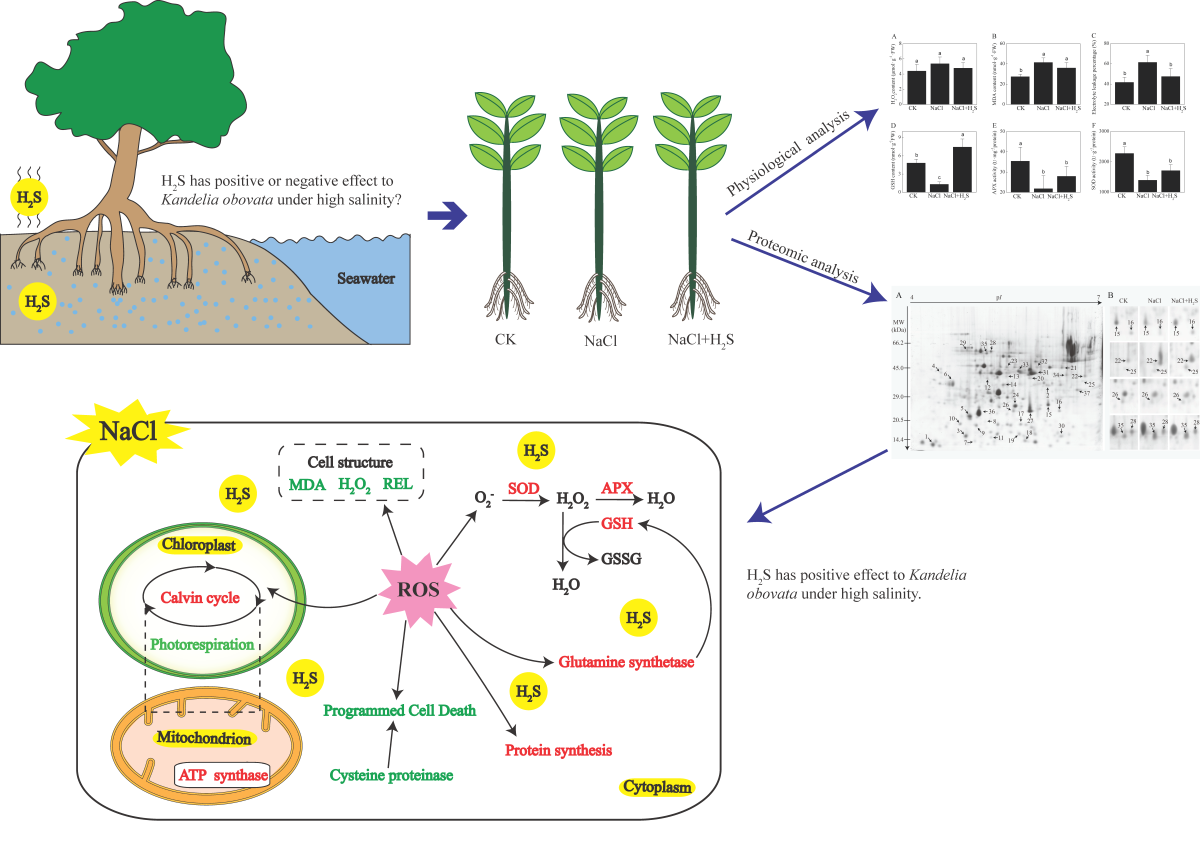As a dominant mangrove species, Kandelia obovata is distributed in an intertidal marsh with an active H2S release. Whether H2S participates in the salt tolerance of mangrove plant is still ambiguous although increasing evidence have demonstrated that H2S functions in plant responses to multiple abiotic stresses. In this study, as an H2S donor, NaHS was used to investigate the regulatory mechanism of H2S on salt tolerance of K. obovata seedlings using a combined physiological and proteomic analysis. The results showed that the reduction in photosynthesis (Pn) caused by 400 mM NaCl was recovered by the addition of NaHS (200 μM). Furthermore, the application of H2S enhanced the quantum efficiency of PSII and the membrane lipid stability, implying that H2S is beneficial to the survival of K. obovata seedlings under high salinity. We further identified 37 differentially expressed proteins by proteomic approaches under salinity and NaHS treatment. Among them, the proteins related to photosynthesis, primary metabolism, stress response and hormone biosynthesis were primarily enriched. The physiological and proteomic results highlighted that exogenous H2S up-regulated photosynthesis and energy metabolism to help K. obovata to cope with high salinity. Specifically, H2S increased photosynthetic electron transfer, chlorophyll biosynthesis and carbon fixation in K. obovata leaves under salt stress. Furthermore, the abundances of other proteins related to metabolic pathway, such as antioxidation (APX, CSD2, PDX1), protein synthesis (HSP, Cpn 20), nitrogen metabolism (GS2, GS1:1), glycolysis (PGK, TPI), AsA-GSH cycle were increased by H2S under high salinity. These findings provide new insights into the roles of H2S in the adaptations of mangrove plant K. obovata to high salinity environment.

